|
|
Biographies
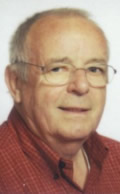 Erik Andersen, Rapporteur,
ITU-T SG 17 Erik Andersen, Rapporteur,
ITU-T SG 17
Erik Andersen is the Rapporteur for the ITU-T Study Group 17 Question on
“Directory Services, Directory Systems, and Public-key/Attribute
Certificates”. Erik is the Project Editor for X.500 and edited the
latest four editions. He has been involved in the X.500 standardisation
since 1984 and participated in and chaired X.500 workshops. Erik is also
the Project Editor for ITU-T E.115 - Computerized directory assistance.
Erik has since 1995 worked as an independent consultant, incl. doing
freelance work for Devoteam Denmark consultancy.
Erik worked for IBM for 27 years starting in the IBM semiconductor
division in Vermont, USA, working on integrated circuits. Later joined
IBM Denmark as a System Engineer ending as a Senior System Engineer. He
was most of the time working as data communications and protocol
specialist. Was the IBM Denmark’s top specialist on IBM’s Systems
Network Architecture (SNA). Represented IBM in the Open Systems
Interconnection (OSI) standardisation work.
Erik worked with semiconductors at Haldor Topsoe in Denmark and
Westinghouse in USA.
Erik took a M.S degree in Electronics and Physics at the Danish
Technical University in 1965. |
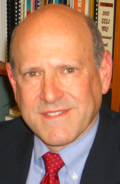 George Arnold,
National Coordinator for Smart Grid Interoperability National Institute
of Standards and Technology (NIST) George Arnold,
National Coordinator for Smart Grid Interoperability National Institute
of Standards and Technology (NIST)
George Arnold was appointed National Coordinator for Smart Grid
Interoperability at the National Institute of Standards and Technology
(NIST) in April 2009. He is responsible for leading the development of
standards underpinning the nation’s Smart Grid. Dr. Arnold joined NIST
in September 2006 as Deputy Director, Technology Services, after a
33-year career in the telecommunications and information technology
industry.
Dr. Arnold served as Chairman of the Board of the American National
Standards Institute (ANSI), a private, non-profit organization that
coordinates the U.S. voluntary standardization and conformity assessment
system, from 2003 to 2005. He served as President of the IEEE Standards
Association in 2007-2008 and Vice President-Policy for the International
Organization for Standardization (ISO) in 2006-2009.
Dr. Arnold previously served as a Vice-President at Lucent Technologies
Bell Laboratories where he directed the company’s global standards
efforts. His organization played a leading role in the development of
international standards for Intelligent Networks and IP-based Next
Generation Networks. In previous assignments at AT&T Bell Laboratories
he had responsibilities in network planning, systems engineering, and
application of information technology to automate operations and
maintenance of the nationwide telecommunications network.
Dr. Arnold received a Doctor of Engineering Science degree in Electrical
Engineering and Computer Science from Columbia University in 1978. He is
a Senior Member of the IEEE. |
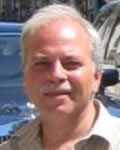 Abbie Barbir, Rapporteur,
ITU-T SG 17 Abbie Barbir, Rapporteur,
ITU-T SG 17
Abbie Barbir is a member of Bank of America Global Information Security
where he serves as Senior Advisor in the areas of Identity Management,
Web services and Security. He is involved in many security related
activities within Kantara Initiative, OASIS, ITU-T, Canadian Advisory
Committee (CAC) ISO/IEC JTC1 SC 6, SC 38 and JTC1 Smart Grid. Abbie
Barbir chairs the Identity Management question in ITU-T SG17. In 2005,
he represented OASIS to ITU-T and was instrumental in having the ITU-T
consent the SAML and XACML OASIS Standards as ITU-T Recommendations.
Abbie holds a Ph.D. in Computer Engineering from Louisiana State
University in Baton Rouge, USA. In his more than 20 years in the
software and security industry, he has been a professor of Computer
Science in Western Carolina University, an application developer, data
compression and encryption inventor, systems architect, security
architect, engineering manager, consultant, author, and inventor of
numerous security algorithms. |
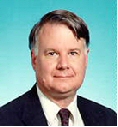 Herb Bertine, former Chairman, ITU-T SG 17
Herb Bertine, former Chairman, ITU-T SG 17
Herbert ertine is the former chairman of ITU-T Study Group 17. He has
been actively involved in the standards work of the ITU since 1975 and
has held senior leadership positions for 28 years. He has devoted
extensive efforts in facilitating cooperation with SDOs. He has
represented the ITU-T in ISO/IEC/ITU-T SAG on security since its
formation and is the ITU-T liaison officer to ISO/IEC JTC 1.
Herb also has been active in other arenas dealing with ICT standards
including ISO/IEC JTC 1/SC 6 and ANSI. He was instrumental in developing
the collaborative procedures between ITU-T and JTC 1 (reflected in Rec.
A.23) and in establishing the cooperative procedures with the IETF.
Herb retired in November 2007. He was Director, Standards at Lucent
Technologies where he led Lucent’s standards efforts worldwide. He
joined Bell Laboratories in June 1965 and spent his career in
communication technologies. This included systems engineering work on
modems, digital data systems, X.25 packet networks, open systems, and
advanced communication systems. Since 1982, he had various
responsibilities for corporate-wide standards management.
In October 2006, Herb was awarded the American National Standards
Institute (ANSI) Edward Lohse Information Technology Medal for
outstanding technical and managerial leadership in establishing
international information technology and telecommunications standards
and the methods by which they are produced.
Herb has a Bachelor of Electrical Engineering degree and a Master of
Electrical Engineering degree from Rensselaer Polytechnic Institute. |
Ian Bryant, EU NEISAS Project
Ian Bryant is an Electronic Engineer by profession, who has specialized in
Information Assurance (IA) for UK Government since well before IA was
called by that name.
His experience includes Systems Engineering, IA Architecture, Security
Accreditation, Policy development, Computer Security Incident Response
Team (CSIRT) implementation, and Research Management.
In recent years he helped found the National IA Forum (formerly GIPSI),
was responsible for the Ministerially backed ITsafe Warning Service (and
its subsequent merger with GetSafeOnline), was the Technical Manager for
the Pilot Operation of the CSIA (now CESG) Claims Tested Mark (CCT Mark)
Scheme, was lead IA specialist for the MS3i and NEISAS Projects, and is
currently assigned as Enterprise Security Architect for UK’s National
Policing Improvement Agency (NPIA). |
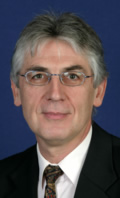 David W. Chadwick,
Professor of Information Systems Security, University of Kent, Canterbury David W. Chadwick,
Professor of Information Systems Security, University of Kent, Canterbury
David Chadwick is Professor of Information Systems Security at the
University of Kent. and leader of the Information Systems Security
Research Group. He is a member of IEEE and ACM and has published widely,
with over 120 publications in international journals, conferences and
workshops. He has successfully managed over 25 research projects. He
pecialises in PKI, Privilege Management Infrastructures, Trust
Management, Identity Management, and Privacy Management. He actively
participates in standardisation activities, is the UK BSI representative
to X.509, the chair of the Open Grid Forum OGSA Authorisation Working
Group, and the author of a number of Internet Drafts, RFCs and OGF
documents. |
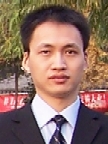 Jianyong Chen, Vice-Chair, ITU-T SG 17
Jianyong Chen, Vice-Chair, ITU-T SG 17
Dr. Jianyong Chen is technical advisor at ZTE Corporation. He has over 10
years of experience in information security and network security. From
2005, he is Vice-chairman of ITU-T SG17. During 2005-2008, he was
Rapporteur of ITU-T SG17 Question-Countering Spam by Technical Means,
and editor of various ITU-T Recommendations.
|
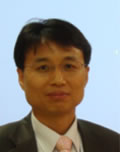 Myung-Geun Chun, Chungbuk
National University, Korea Myung-Geun Chun, Chungbuk
National University, Korea
Professor Chun received the B.S. degree in electronics engineering from
Pusan National University, in 1987 and the M.S. and Ph.D. degrees in
electrical engineering from the Korea Advanced Science and Technology
(KAIST), Korea, in 1989 and 1993, respectively. Prior to joining
Chungbuk National University, he worked at the Samsung Electronics as a
senior researcher. Since 1996, he has been working at College of
Electrical and Computer Engineering, Chungbuk National University. He
serves now as Chair of PG505(Biometric Project Group) of
TTA(Telecommunications Technology Association) in Korea. He also serves
as an editor for ISO/IEC JTC 1 SC27 24745 project “Biometric Information
Protection”. His current research interests include privacy sympathetic
biometric system, PKI based biometric application, and intelligent
systems. |
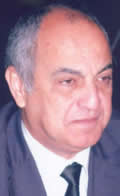 Taieb Debbagh,
Secretary General, Ministry of Industry, Trade and New Technologies,
Department of Post, Telecommunications & New Technologies, Morocco Taieb Debbagh,
Secretary General, Ministry of Industry, Trade and New Technologies,
Department of Post, Telecommunications & New Technologies, Morocco
Mr. Taieb Debbagh was appointed in August 2006 the Secretary General -
Department of Post, Telecommunications and New Technologies / Ministry
of Industry, Trade and New Technologies - Morocco.
Mr Debbagh is PhD in Computer Sciences – Paris Dauphine and Certified
Information Systems Auditor (CISA).
Mr Debbagh was a member of the High Level Expert Group – Global
Cybersecurity Agenda - ITU ", in which he has chaired the working area
"Organizational Structures" and He’s the Q22/1 Vice-Rapporteur for the
next the period 2011-2014. |
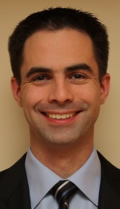 Luc Dandurand, Senior Scientist, CAT2 - Cyber Defence and
Assured Information Sharing NATO C3 Agency
Luc Dandurand, Senior Scientist, CAT2 - Cyber Defence and
Assured Information Sharing NATO C3 Agency
Mr Luc Dandurand joined the NATO C3 Agency (NC3A) in January 2009 as a
Senior Scientist in the “Cyber Defence and Assured Information Sharing”
group.
As a Signals Officer in the Canadian Forces (CF), Mr. Dandurand held
various scientific and technical positions. He was an Intelligence
Analyst for ground-based radars and Surveillance, Target Acquisition,
Night Observation and Countersurveillance equipment in the Directorate
of Scientific and Technical Intelligence at National Defence
Headquarters. He then led the Canadian Forces Information Operations
Group’s Network Vulnerability Analysis Team during its expansion,
supervising vulnerability assessments of military operational networks
in Canada and in theatre. Finally, he founded the Canadian Forces Red
Team, responsible for conducting controlled computer network attacks
against military networks in order to assess their security and the
network managers’ ability to react, contain and recover from such
attacks, as well as demonstrate their impact.
In 2003 he left the CF and joined the Communication Security
Establishment (CSE), continuing to work in the expanded Joint Red Team,
now operated by both the CF and CSE. In 2005, he was tasked to lead the
CyberLab, a team of scientists and engineers who prototype novel
solutions to difficult Cyber Defence problems. While in this position,
he lead the development of an intrusion detection system capable of
detecting sophisticated attacks. For a period of several months, he also
was tasked to assist in the development of the legal framework and
policies that support part of the Cyber Defence activities of the CSE.
At NC3A, Mr. Dandurand has contributed to various scientific projects in
Cyber Defence, centred on network monitoring and dynamic risk
assessment. He also provides technical support to the NATO Computer
Incident Response Capability acquisition project, and assists in the
development of the scientific programme of work in Cyber Defence at
NC3A.
Mr Dandurand received his Bachelor of Engineering degree in Engineering
Physics in 1993 from the Royal Military College (RMC) of Canada and his
Masters of Engineering degree in Computer Engineering in 1999, also from
RMC. He has over 10 years of operational experience in Cyber Defence. |
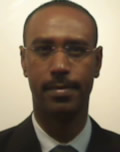 Mohamed M. K. Elhaj, ITU-T SG 17 Vice-chair Mohamed M. K. Elhaj, ITU-T SG 17 Vice-chair
Mr. Elhaj holds BSc and MSc degrees in Computer Engineering from Near
East University (Turkey) and now he is doing a Ph.D in Electrical and
Electronic Department; in Network Security field at the Sudan University
of Science and Technology.
Mr. Elhaj is now working for the National Telecommunications
Corporation, the Telecommunication Regulatory Authority body, as Head of
Information Networks Department. He was head of the Internet Filtering
Project and he involves in many Standardization activities in Sudan and
Africa. He is also responsible for many national projects concerning
Security like National Security Awareness project and Security
Standardization Committee and he is part of the Sudan CERT higher
Committee.
Mr. Elhaj was elected Vice-chairman, Study Group 17 at the World
Telecommunications Standardization Assembly (WTSA-08) that was held in
Johannesburg South Africa in October 2008. |
James G. Ennis, Department of State, USA and ITU-D Question 22/1 Rapporteur
James Ennis (Jamie) is the Senior Adviser on Cybersecurity to Ambassador
Verveer in the U.S. Department of State. Ambassador Verveer is the head
of the Communications and Information Policy Deputate of the Economic,
Energy and Business Bureau and coordinates U.S. international
communications policy.
Jamie is the Rapporteur to Q22/1 in the ITU Development Sector, which
has a work program to develop reports on cybersecurity best practices
for capacity-building in developing countries. These reports will cover
such issues as development of national strategies, principles of public/
private partnerships, development of watch, warning and incident
response (CIRT) programs, development of a culture of awareness, and ISP
best practices.
Jamie leads U.S. delegations to ITU Study Groups 17 and 13, which
develop technical cybersecurity standards, addressing such technical
issues as identity management, spam, call traceback, and deep packet
inspection.
Jamie was a member of the White House team that developed the Cyberspace
Policy Review for President Obama. He participates actively in various
subcommittees of the White House Cybersecurity Interagency Policy
Committee (IPC). In 2008 he chaired the Grid Working Group on the White
House Office of Telecommunications Policy’s Task Force on Identity
Management.
Prior to joining the State Department in 2002, Jamie was Deputy General
Counsel at Iridium LLC, the satellite cellular phone company, where he
was responsible for global licensing and regulatory issues. Before that,
he was for many years a partner in a law firm in Washington, D.C. where
he specialized in communications law issues. During this period he was
also General Counsel to the Washington Chapter of the Armed Forces
Communications and Electronics Association (AFCEA) and the AFCEA
Educational Foundation.
Jamie has a B.A. from Dartmouth, where he graduated with distinction,
and a J.D. and LLM from Georgetown University Law School. He is past
Vice-Chair of the American Bar Association's Sub-Committee on Satellite
Communication Law and Vice-Chair of the International Bar Association's
Committee on International Satellite Communications. |
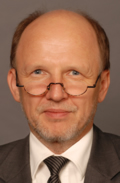 Walter Fumy, Chairman, JTC 1/SC 27
Walter Fumy, Chairman, JTC 1/SC 27
Dr. Walter Fumy is Chief Scientist at Bundesdruckerei GmbH, Berlin.
Dr. Fumy has published numerous papers and several books, and is a
frequent speaker at conferences and events. Since many years he is
strongly involved in the international standardization of security
techniques, currently serving as Chairman of ISO committee SC 27 "IT
Security Techniques". He also chairs the BITKOM (German Association for
Information Technology, Telecommunications and New Media) Group on
Security Management. |
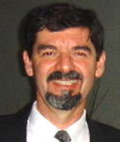 Antonio Guimaraes, ITU-T SG17 Vice-chair Antonio Guimaraes, ITU-T SG17 Vice-chair
Antonio
Guimaraes is Vice Chairman of ITU-T Study Group 17, and the rapporteur
of Q.1/17 - Telecommunications systems security project. He is graduated
in electronic engineering, in 1977, from ITA – Brazil, and has over
thirty years of experience in telecommunications and real time software
development. After a successful career in big international companies,
in April 2005, Antonio joined Anatel, the Brazilian telecommunication
regulator. He is now the deputy head of the Office of International
Affairs and coordinator of standardization matters. |
Mario Hoffmann, Head of Department "Secure
Services & Quality Testing", Fraunhofer Institute for Secure Information
Technology
Mario Hoffmann – representative of the WWRF Vision Committee – received
his diploma in computer science from Darmstadt University of Technology,
Darmstadt, Germany, in 1998. He completed his master thesis at Nanyang
Technological University, Singapore. In 1999 he joined the Fraunhofer
Institute for Secure Information Technology (SIT) in Darmstadt, Germany.
From May 2004 to Dec 2008 he was the head of the research department
"Secure Mobile Systems". Since January 2009 he has been responsible for
the research department "Secure Services and Quality Testing" at SIT's
new premises in Munich. His research activities are dedicated to
security in service oriented architectures and user-centric identity
management in ambient environments. Mr. Hoffmann is a member of the ACM,
GI, and CCC as well as the chair of Working Group 7 "Security & Trust"
of the WWRF. |
Yoshiaki Isobe, Hitachi, Japan
Yoshiaki ISOBE is a senior researcher of Hitachi, Ltd., Systems
Development Laboratory. And he is one of Associate Rapporteurs of ITU-T
SG 17 Question 9: Telebiometrics. He is specialized in biometrics
security and IT security. He was the editor of ITU-T Recommendation
X.1084: Telebiometrics system mechanism - General biometric
authentication protocol and system model profiles for telecommunications
systems. He is also a co-editor of ITU-T Recommendation X.gep – A
guideline for evaluating telebiometric template protection techniques. |
 Mikhail Kader, Systems engineer for Security, Cisco Systems, Russia
Mikhail Kader, Systems engineer for Security, Cisco Systems, Russia
Mikhail Kader is the Distinguished Systems engineer for Security working
at Cisco Systems, Inc. He has over 20 years of experience in Information
Technology and network security. As the key part of his job he has been
providing security consulting to key SPs in Russia and CIS region.
Mikhail was also the part of working groups in Russia developed several
security documents and proposals including “Security Conception for
Public Networks”, “Baseline security level for telecom networks”. |
Youki Kadobayashi, Nara Institute of Science and Technology, Japan
Youki Kadobayashi received his Ph.D. degree in Computer Science from Osaka
University, Japan, in 1997. He is currently an Associate Professor in
the Graduate School of Information Science, Nara Institute of Science
and Technology, Japan. Since 2006, he has also been working as the
project lead at traceable network research group of information security
research center, NICT. His research interest includes cybersecurity,
internet architecture, and distributed systems. He is an associate
rapporteur of ITU-T Q.4/17. |
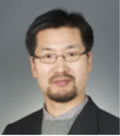 Hakil Kim, ITU-T Telebiometrics Rapporteur Hakil Kim, ITU-T Telebiometrics Rapporteur
Hakil Kim is the Rapporteur of Q.9/17. He received his PhD degree in
electrical and computer engineering from Purdue University, West
Lafayette, IN, US. He joined Inha University at Incheon, Korea in 1990.
He is also active in ISO/IEC JTC1/SC37. He has been the editor and
co-editor of several ITU-T Recommendations and ISO/IEC Standards. His
research area includes biometrics, medical image processing, and
computer vision. |
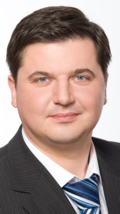 Dmitry V. Kostrov,
Associate Rapporteur, ITU-T SG 17 Dmitry V. Kostrov,
Associate Rapporteur, ITU-T SG 17
Dmitry Kostrov is the Associate Rapporteur of Q.1/17. During his career
20+ year he has been involved in the design and standardization of
security in TELCO. Now he is responsible for research leadership in
security programs in MTS’s. Dmitry is working with Cybersecurity
Information Exchange Framework and problem with privacy in TELCO. Before
MTS, he was working in MTT as CISO. |
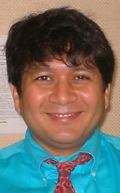 Nir Kshetri,
Professor of Business Administration, University of North Carolina, USA Nir Kshetri,
Professor of Business Administration, University of North Carolina, USA
Nir Kshetri is Associate Professor at University of North
Carolina-Greensboro. Nir holds a Ph D in Business Administration from
University of Rhode Island. Nir is the author of The Global Cyber-crime
Industry: Economic, Institutional and Strategic Perspectives (Springer-Verlag,
2010). Nir has published over forty journal articles, 25 book chapters
and presented 100 papers. Nir is two time winner of the Pacific
Telecommunication Council’s Meheroo Jussawalla Research Paper Prize
(2010 and 2008) and a finalist in the Management and Organization Review
(MOR) Best Paper Award in the China Goes Global Conference organized by
the Harvard University (October, 2008). |
Victor Kutukov, Chairman of ITU-T Focus
Group on Cloud
Victor Kutukov is the CEO of software company “Stack Soft”, which
specialized on OSS/BSS systems - Billing, CRM, Workflow, Business
process management for telecoms and service providers. Some of "Stack
Soft" applications available under model Software as a Services (SaaS).
Area of his interests - design and development of information systems
for telecoms. He has PhD in computer science. |
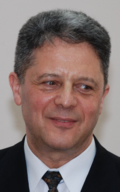 Arkadiy Kremer, Chairman of ITU-T SG 17
Arkadiy Kremer, Chairman of ITU-T SG 17
1970 - graduated from the Moscow Technical University of Communications
and Informatics (MTUCI)
1980 - Ph.D. on technical siences
1980 - 1994 - leader the set of projects in field of implementation the
information and telecommunication technologies
from 1994 - chairman of Russian Association for Networks and Services (RANS)
Executive Committee
from 1997 - head of RANS department in MTUCI
from 2004 - vice chairman of the ITU-T SG 17
from 2008 - chairman of the ITU-T SG 17 |
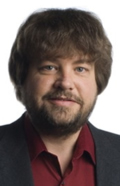 Robert A. Martin,
Principal Engineer, MITRE, CNIS Group Robert A. Martin,
Principal Engineer, MITRE, CNIS Group
Robert A. Martin is a Principal Engineer at MITRE, a company that works in
partnership with the government to address issues of critical
importance. For the past 18 years, Robert's efforts focused on the
interplay of risk management, cybersecurity, and quality assessment.
The majority of this time has been spent working on the CVE, OVAL, CAPEC
and CWE security standards initiatives in addition to basic quality
measurement and management. Robert is a frequent speaker on the various
security and quality issues surrounding information technology systems
and has published numerous papers on these topics. Robert joined MITRE
in 1981 with a BS and MS in EE from RPI, later he earned an MBA from
Babson College. He is a member of the ACM, AFCEA, IEEE, and the IEEE
Computer Society. |
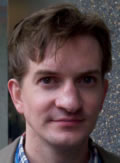 Thomas Millar,
Senior Researcher, Analyst & Action Officer, United States Computer
Emergency Readiness Team (US-CERT) Thomas Millar,
Senior Researcher, Analyst & Action Officer, United States Computer
Emergency Readiness Team (US-CERT)
Mr. Millar serves as a senior researcher, analyst and action officer at
US-CERT.
Since joining US-CERT in 2007, he has acted as a network analyst, senior
watch officer and deputy operations manager, playing a significant role
in coordination and response activities during major global cyber events
such as the 2007 Estonian DDoS attacks, Conficker's spread and countdown
clock, the US DDoS attacks of 2009, and several others. He holds a M.Sc
in Engineering Management & Systems Engineering from George Washington
University. |
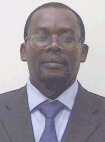 Patrick Mwesigwa,
ITU-T SG 17 Vice-chair Patrick Mwesigwa,
ITU-T SG 17 Vice-chair
Eng Patrick Mwesigwa holds a BSc. in Electrical Engineering from
Makerere University, Kampala and Masters in Operational
Telecommunications from Coventry University, UK.
He worked with Uganda Posts and Telecommunications Corporation and later
Uganda Telecom for a period of 20 years starting as a Pupil Engineer and
was later promoted through the ranks to the post of Chief of planning.
During his service with Uganda Telecom he was involved in planning,
construction and maintenance of transmission and switching systems
around the country.
Eng Mwesigwa joined Uganda Communication Commission as a Technical
Manager in 2001. In January 2008, Mr Mwesigwa was appointed
Director/Technology and Licensing and in January 2010 he was appointed
Acting Executive Director, Uganda Communications Commission following
the end of the contract for the Executive Director. Mr Mwesigwa was
elected Vice-Chairman for ITU Study Group 17 at the WTSA-08 that was
held in Johannesburg in October 2008.
He has participated and presented at a number of regional and
international fora on telecommunications and ICT. |
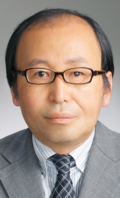 Koji Nakao,
ITU-T SG17 Vice-Chair and Vice-Chair of Focus Group on Cloud Koji Nakao,
ITU-T SG17 Vice-Chair and Vice-Chair of Focus Group on Cloud
Koji Nakao received the B.E. degree of Mathematics from Waseda
University, in Japan, in 1979. Since joining KDDI in 1979, Koji has been
engaged in the research on communication protocol, and information
security technology for telecommunications in KDDI laboratory. After
2003, Koji has moved to KDDI head office to construct and manage its
security systems. In 2004, he has started to additionally work for NICT
(National Information Communication Technologies). His present positions
are "Information Security Fellow" to manage all the security issues
required in KDDI and "Group Leader" to manage research activities for
network security technologies in NICT. As for standardization
activities, Koji is currently working for a vice-chair of SG17 and a
vice-chair of FG Cloud in ITU-T and also acting for a national convener
of ISO/IEC JTC1/SC27/WG4 in Japan. |
 Miho Naganuma,
ISOG-J, Q.3 Rapporteur, ITU-T SG 17 Miho Naganuma,
ISOG-J, Q.3 Rapporteur, ITU-T SG 17
Miho Naganuma is the Reapporteur of Q3/17 (Telecommunication security
management).
She has over 10 years’ experience in the information security management
area and has been actively involved in the international standards work
of the ITU-T and ISO for IT Security. She also contributes to the
regional standards activity in Asia-Pacific Telecommunity
Standardization Program (ASTAP) as the chairman of Expert Group
Security.
In 2008 she joined Little eArth Corporation (LAC), leading managed
security service provider (MSSP) in Japan, and currently she is
responsible for creating and managing global relations as well as
researching for security operations at Risk Research Institute of Cyber
Space in LAC.
She is a steering committee member of Information Security Operation
Providers Group Japan (ISOG-J) which is the special industry association
for MSSPs established in 2008 to promote cybersecurity information
exchange among members. |
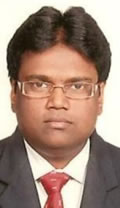 Debabrata Nayak, Director, Cloud Security, Huawei Debabrata Nayak, Director, Cloud Security, Huawei
Dr. Debabrata Nayak has completed his PhD in wireless security from IIT
Bombay. And has been working on security domain in last 17 years. He has
been working in Huawei technology as Director Security. obtained Masters
degree from NIT Rourkela, specialized in Elliptic Curve Cryptography and
Doctorate Degree from IIT Bombay, specialized in Wireless security.
Covering wide areas such as Security system Performance evaluation,
Design of secure cryptographic system, Wireless Security policy design
and implementation. He designed Security solution for INFINET (Indian
Financial Network).
He has presented 42 papers in international conferences and technical
journals. He is active member of STIG and reviewed guideline for Unix
STIG and Network STIG. He has worked with Motorola as Security
Architect, Reserve Bank of India as Research officer, and with Tata
Elxsi as security expert. He has extensively worked on LTE Security and
WiMax Security.
He was consultant to various financial institutes for implementation of
standards such as BS7799 and ISO 17799. He was also consultant to
Ministry of Communication and IT of India for Secure mCheque project.
He is member of International Association for Cryptological Research,
WiMax Forum (GWRG Group), LTE Forum (BWA Group), 3GPP SA3,CSA, IEEE
Security and privacy and Cryptology Research Society of India. Senior
member in Huawei Network security Management Committee. |
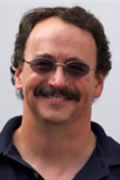 Tim Polk,
Security Area Director, IETF Tim Polk,
Security Area Director, IETF
Tim Polk is a Computer Scientist at the National Institute of Standards and Technology (NIST). Tim has been at NIST since 1982, and joined the Computer Security Division in 1988. His work has focused on cryptographic security mechanisms since 1994, with an emphasis on PKI standardization and deployment. Tim Polk has served as a Security Area Director for the Internet Engineering Task Force (IETF) since March 2007, and he co-chaired the IETF's Public Key Infrastructure using X.509 (pkix) Working Group for many years. Tim contributed to the development of several IETF PKI standards and was co-author of RFCs 2459, 2528, 3039, 3279, and 3280. Tim is also co-author of the book “Planning for PKI”. He has degrees in Computer Science and Electrical Engineering from University of Maryland. |
Damir Rajnovic, FIRST SDO Liaison, FIRST
Damir is part of Cisco PSIRT (Product Security Incident Response Team).
The only group in Cisco that publishes Cisco Security Advisories and we
are the focal point for product security within Cisco. In the current
role Damir’s responsibilities are to do whatever it takes to remove
security vulnerabilities from all Cisco's products. Apart from the
reactive work (responding to customer's incidents and managing
vulnerabilities) Damir works on several proactive efforts to help
building more secure products. These efforts are concentrated on
educating developers to write more secure code and working with product
designers during the design stage.
Part of the daily job is to liaise and maintain relationship with
relevant external organisation. Some of the entities Damir is connect to
are: law enforcement, coordinating centres (CERT/CC, JPCERT, NISCC) and
other appropriate entities (Internet Crime Forum, GCHQ).
Damir is actively involved in computer security arena since 1993. It
started with Ministry of Foreign Affairs of Republic of Croatia,
continued in Ministry of Science and Technology of Republic of Croatia,
moved to EuroCERT to end in Cisco System’s PSIRT where he still is.
EuroCERT (now defunct) was project with the aim to coordinate CERTs
within European region. During that period he established CarnetCERT,
was instrumental in creation of EuroCERT and constantly involved in CERT
forums - both FIRST (internationally) and TF-CSIRT (European region).
Non-security related work includes working on a Radio 101 as a sound
engineer and a theatrical group.
Among other FIRST-related activities, Damir is the main driver behind
Vendor SIG (http://first.org/vendor-sig/index.html) – special interest
groups under FIRST umbrella. The purpose of that forum is to facilitate
dialog among product security groups from different vendors.
Damir is FIRST liaison officer to ISO and ITU. Apart from coordinating
FIRST acitvites in both standardisation organisations Damir is actively
contributing to multiple standards (e.g., ISO 29147 "Vulnerability
Disclosure" and ITU-T Cybex framework).
Damir is invited lecturer for MSc Information Technology Security course
at Westminster University. |
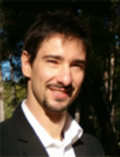 Carmine Rizzo, ETSI Security Coordinator, ETSI
Carmine Rizzo, ETSI Security Coordinator, ETSI
Carmine Rizzo has worked at ETSI in France since November 2007, where he
is the proactive point of reference for Security Standardization
activities and he is responsible for the supervision, co-ordination and
promotion of ETSI Security Standardization work within and across
various Technical Bodies.
He obtained a Degree (Laurea) in Electronic/Telecommunication
Engineering in Italy, followed by a Ph.D in Radio Communications in the
United Kingdom.
His professional background in the United Kingdom includes experience in
the private sector for Nortel Networks as Data Communications Network
Engineer, and over five years’ experience in the international
organisation ECMWF (European Centre for Medium-range Weather Forecasts),
working in an operational environment for the management of IT projects,
services and security.
He has gained, and actively maintains, several professional
certifications covering broad aspects of technical security and security
management, as well as project management, IT audit, control, and
service management. |
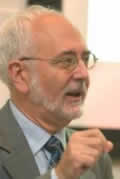 Tony Rutkowski, Rapporteur,
ITU-T SG 17 Tony Rutkowski, Rapporteur,
ITU-T SG 17
Tony Rutkowski is ITU-T Study Group 17 (Security) Rapporteur for
Cybersecurity. In that role, he has been instrumental in leading the
team developing the Cybersecurity Information Exchange Framework (CYBEX)
ensemble of specifications. He is also the ETSI LI Technical Committee
eWarrant Rapporteur, and active in OASIS and other standards and
advisory bodies. Tony participates in ITU-T work as EVP for Regulatory
Affairs and Standards for Yaana Technologies. He is also a Distinguished
Senior Research Fellow, at the Georgia Center for International Strategy
Technology and Policy. An engineer-lawyer - he has spent the past 45
years in a broad array of positions as an enterprise strategist, public
official, organization leader, consultant, lecturer, and author in the
Internet, telecom, aerospace, and broadcasting worlds, in the U.S. and
internationally in the private sector (VeriSign, SAIC, General Magic,
Sprint International, Horizon House, Pan American Engineering, General
Electric, Evening News Association) government (FCC, the ITU, Cape
Canaveral City Council), academic (Internet Society, MIT, and NY Law
School), and consulting as Netmagic Associates. |
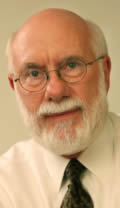 John Sabo, Director, Global Government Relations, CA
Technologies
John Sabo, Director, Global Government Relations, CA
Technologies
John Sabo is Director, Global Government Relations for CA Technologies,
where he focuses on trusted infrastructure technologies, policies, and
practices. Mr. Sabo co-chairs the Privacy Management Reference Model
Technical Committee and chairs the IDtrust Member Section Steering
Committee in the OASIS standards organization. He serves as President of
the non-profit International Security Trust and Privacy Alliance
(ISTPA); as a board member of the Information Technology-Information
Sharing and Analysis Center (IT-ISAC); and as a member of the IT Sector
Coordinating Council focusing on critical infrastructure protection. In
the ISTPA, he co-authored the ‘ISTPA Privacy Management Reference Model
v2.0” and edited the ISTPA “Analysis of Privacy Principles: Making
Privacy Operational.”
Mr. Sabo is a member of the Department of Homeland Security Data Privacy
and Integrity Advisory Committee and a past appointee to the NIST
Information Security and Privacy Advisory Board (ISPAB). In his
government career, Mr. Sabo was Director of the U.S. Social Security
Administration’s Electronic Services Staff where he pioneered
e-government Web applications. He holds degrees from King’s College
(Pennsylvania) and the University of Notre Dame, and is a Certified
Information Systems Security Professional (CISSP). |
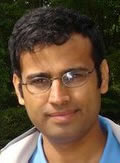 Anil Saldhana, OASIS Co-chair, ID Cloud TC, OASIS ID
Trust Steering Committee Member
Anil Saldhana, OASIS Co-chair, ID Cloud TC, OASIS ID
Trust Steering Committee Member
Anil is the co-chair of the Oasis Identity In The Cloud TC and an
elected member of the Oasis IDTrust Steering Committee. He works as the
Lead Security Architect for the Middleware division of Red Hat Inc. He
represents Red Hat on security standards at Oasis, W3C and the JCP. He
speaks on security topics around the world. |
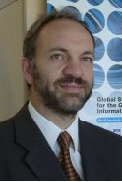 Reinhard Scholl,
Deputy to the Director of TSB
Reinhard Scholl,
Deputy to the Director of TSB
Reinhard Scholl is Deputy to the Director of the ITU-T Secretariat (TSB) since September 2002. Previously he has been with Siemens in Munich, Germany and with ETSI (European Telecommunications Standards Institute). He received a Ph.D. in physics from the University of Illinois, USA. |
 Gregg Schudel,
Technical Marketing Engineer, LISP, Cisco Systems, Inc. Gregg Schudel,
Technical Marketing Engineer, LISP, Cisco Systems, Inc.
Gregg Schudel is currently a Technical Marketing Engineer with the
Network Protocol Engineering group of Cisco Systems, Inc where he
supports the development of LISP. After joining Cisco in 2000, and spent
seven years consulting in US Service Provider area where he specialized
in security for large-scale network infrastructures. He then led a
Cisco-wide initiative to organize Service Provider-scale infrastructure
security information, techniques, and best practices. He also has
supported Cisco’s participation in ITU-T SG17 for the past three years.
Prior to Cisco, he worked for many years at BBN, where he supported
Internet security research and development, most notably in conjunction
with DARPA and other Federal agencies. He holds BS and MS degree's in
engineering, and is a Cisco Certified Internet Expert (CCIE). |
Arturo Serrano, CICESE Research Center,
Mexico
Dr. Arturo Serrano Santoyo earned his Doctor’s degree in Electrical
Engineering from the National Polytechnic Institute in Mexico City in
1980. In 1981 he received the ALCATEL Annual Telecommunications Award
for his contributions to rural satellite communications in Mexico, and
in 1986 was honored with the ERICSSON Telecommunications Award. He has
been a telecommunications consultant for the Organization of American
States and the United Nations as well as for many private companies and
governmental agencies. He was founder and Executive Director of Praxis
Telecom and Teleddes Foundation. Dr. Serrano is member of the Mexican
Academy of Engineering and author of the books “Telecommunications in
Latin America”, The Digital Divide: Myths and Realities” and
"Digitalization and Global Convergence". He is currently researcher at
the Center for Scientific Research and Higher Education of Ensenada
(CICESE) and professor at the Autonomous University of Baja California,
Mexico. |
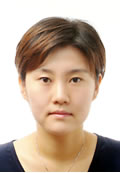 Yong-Nyuo Shin, Hanyang
Cyber University, Korea Yong-Nyuo Shin, Hanyang
Cyber University, Korea
Professor Yong-Nyuo Shin teaches computer science at Department of
computer engineering, Hanyang Cyber University, Seoul, Korea. In the
past, she served as a researcher with electronic banking team for Bank
of Korea. She also served as a senior researcher at the Department of
Security Technology, Korea Information Security Agency. She received her
BSc degree in computer science from Soongsil University in 1999 and the
MSc degree in computer science from Korea University in 2001, South
Korea. She received the PhD degree in computer science from Korea
University in 2008, South Korea. She has been serving her editorship or
co-editorship in progressing many standardizations for ITU-T/SG17,
ISO/IEC JTC1/ SC27 and SC37. Her current research interests are
telebiometrics, authentication technologies, privacy, and steganography.
She has published over a hundred technical and scientific international
journals on a variety of information security topics. |
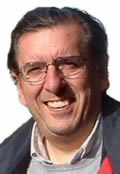 Enrico M. Staderini,
Western Switzerland University of Applied Science, Switzerland Enrico M. Staderini,
Western Switzerland University of Applied Science, Switzerland
Professor Enrico M. Staderini teaches biomedical technologies and
biomedical electronics at the Haute Ecole d'Ingénierie et de Gestion du
Canton de Vaud (Western Switzerland University of Applied Sciences),
Department of Industrial Technologies, Institute of Industrial
Automation. In the past he served as researcher and medical consultant
with the Norwegian Centre for Telemedicine (North Norway University
Hospital, Tromsø, Norway) and as assistant professor of applied physics
in medicine with the “Tor Vergata” University of Rome. He also served as
visiting professor with the EMBRAPA Empresa Brasileira de Pesquisa
Agropecuária, Instrumentação Agropecuária, São Carlos-SP, Brazil, with
the CETEPE Centro de Tecnologia Educacional para Engenharia,
Universidade de São Paulo, Escola de Engenharia de São Carlos-SP, Brazil
and the Bioengineering Centre of the Ohio State University, Columbus
(Ohio, USA). He was also visiting professor at the College of Medical
Physics in the International Centre for Theoretical Physics (ICTP-IAEA)
in Trieste (Italy).
His very interdisciplinary career started with a medical doctor degree
from “La Sapienza” University of Rome (integrated with a formal
education in engineering), followed by a specialization in
bioengineering, a PhD in cardiovascular physio-pathology and finally a
specialization in assistive technologies for the handicapped and the
elderly people from the University of Trieste (Italy). He is a certified
medical professional in Italy and Norway and a European certified
informatics professional (EUCIP). His present main research interests
are in the fields of biomedical electronics, biomedical technologies,
rehabilitation engineering, electromagnetic sensors for medicine (UWB
radars in medicine) and regulatory issues in bioengineering, in which
topics he published extensively.
He is a member of the Swiss Chapter of the IEEE, the IEEE EMBS, the
SEREC (Swiss Electromagnetics Research & Engineering Centre) and the
SSBE (Swiss Society for Biomedical Engineering). No surprise in his
spare time he practices the radio-amateur activity as HB9EPK. |
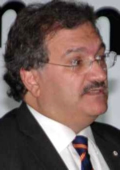 Jon Shamah,
European Sales Manager, eSecurity Enterprise Solutions, NETS Jon Shamah,
European Sales Manager, eSecurity Enterprise Solutions, NETS
Jon is a graduate of Aeronautics & Astronautics. His roles at Hitachi,
McDonnell Information Systems, Thales, CoreStreet and Nets, span over 15
years involvement in Identity Management and Transaction Security. He
specialises in the business exploitation of large scale Public Key
Infrastructures and their usage, especially in critical national
infrastructures and programs. His expertise bridges the gap between
technical and commercial domains and is active in a number of European
Commission initiatives.
Based in the UK, Jon Shamah is Head of European Enterprise Sales of the
eSecurity division at Nets. (Nets is the largest Northern European
Identity and Payments provider, and its PKI organization is the largest
in Nordics. It has been delivering numerous PKI and high end
authentication services since 1997)
Jon is a Vice Chairman of EEMA (www.eema.org ) and was awarded the 2009
Fellowship Award for Services to European eID. |
Werner Streitberger, Senior Research, Fraunhofer
Institute for Secure Information Technology
Werner Streitberger is a senior researcher at Fraunhofer Institute for
Secure Information Technology SIT in Garching near Munich, Germany. He
holds a doctorate degree in information systems from University of
Bayreuth, Germany, and a diploma in computer science from Technical
University, Munich. Dr. Streitberger works in the areas of distributed
systems, multi-agent systems and simulation and leads the Cloud security
team at Fraunhofer SIT. |
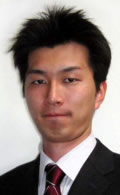 Takeshi Takahashi, NICT
Takeshi Takahashi, NICT
Takeshi Takahashi received his Ph.D degree in Global Information and
Telecommunication Studies from Waseda University in 2005. He is
currently an researcher in the National Institute of Information and
Communications Technology (NICT), Japan.
His research interests include internet security, network protocols and
content delivery system. He participates ITU-T Q.4/17 as an editor. |
 Don Thibeau, Chairman and President, The Open Identity Exchange
Don Thibeau, Chairman and President, The Open Identity Exchange
Don Thibeau is the Executive Director of The Open ID Foundation an open
source, identity standards organization representing leaders in internet
enterprise and social media technology. He is a founder and the Chairman
of the Board of the Open Identity Exchange (OIX) a non-profit,
technology-agnostic, provider of certification services and trust
frameworks for identity authentication in internet and
telecommunications applications. OIX is a US government authorized
certification authority and was founded by companies including Google,
PayPal, AT&T, Symantec, Verizon and Equifax. Thibeau has a rich
background in the data, identity and social layers of the internet and
telecommunications channels. He has enterprise and entrepreneurial
management expertise with domain expertise in consortium-based business
models for data, analytics and web content. Thibeau has held senior
management positions with Kodak, LexisNexis and TransUnion. Thibeau is a
former Presidential appointee has testified before Congress and speaks
and writes on data privacy, identity technologies and related regulatory
issues. |
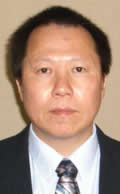 Markus Wong,
3GPP Security Group Vice-chair Markus Wong,
3GPP Security Group Vice-chair
Marcus Wong is in the Wireless Advanced Research & Standards organization
of Huawei North America R&D center. He joined Huawei in 2007 and has
been focusing on various aspects of research and standardization in 3GPP
and WiMAX Forum security area. Marcus is also active in the Wireless
World Research Forum, contributing to various projects within WWRF.
Before joining Huawei, Marcus had spent 15 years in the
telecommunication industry with both Bell Laboratories and Samsung’s
Advanced Institute of Technology covering many aspects of the security
in wireless systems, including that of 2G/3G cellular networks, Personal
Area Networks, and satellite communication systems.
He holds the elected position of vice-chairman of 3GPP SA3 (Security
Group) since November of 2009 and the vice-chairman of WWRF WG7
(Security & Trust Working group) since 2007. |
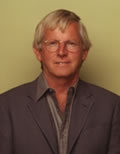 Scott Vanstone,
Cryptographic expert, RIM Scott Vanstone,
Cryptographic expert, RIM
Dr. Vanstone was the founder of Certicom and oversaw all research, which
generated over 300 patents for the company. After Research in Motion’s
acquisition of Certicom, he joined RIM’s Advanced Technology group. Dr.
Vanstone is also a Distinguished Professor Emeritus of Mathematics and
Computer Science at the University of Waterloo. Dr. Vanstone devotes
much of his research to the efficient implementation of the elliptic
curve cryptography (ECC) for the provision of information security
services in handheld computers, smart cards, wireless devices, and
integrated circuits.
Vanstone has published more than 200 research papers and a number of
books on topics such as cryptography, coding theory, finite fields,
finite geometry, and combinatorial designs. He is a co-author of the
Handbook of Applied Cryptography and A Guide to Elliptic Curve
Cryptography. Dr. Vanstone held the NSERC/Pitney Bowes Senior Chair of
Cryptography at the University of Waterloo for eleven years and is the
Executive Director of the Centre for Applied Cryptographic Research also
at Waterloo.
He was elected a Fellow of the Royal Society of Canada, Academy of
Sciences in 1998 and received the University of Waterloo Award for
Excellence in Research in 2004. In 2009 Dr. Vanstone received the
Ontario Premier’s Catalyst Award for Lifetime Achievement in Innovation.
Also in 2009 he retired from the University of Waterloo after 35 years
on faculty and was awarded Distinguished Professor Emeritus.
Scott Vanstone has a Ph.D. in mathematics from the University of
Waterloo. |
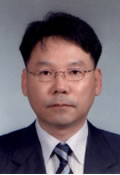 Heung Youl Youm,
Vice-Chair, ITU-T SG 17
Heung Youl Youm,
Vice-Chair, ITU-T SG 17
Heung Youl Youm is a Vice Chairman of ITU-T Study Group 17 and a
Chairman of Working Party 2 of ITU-T Study Group 17.
He is a Chairman of the Korea local Group for ITU-T Study Group 17 to
the Korea Communications Commission.
He was a Rapporteur for the ITU-T Study Group 17 Question on “Secure
Applications Service” since 2005. He was the Project Editor for many
approved ITU-T Recommendations, such as ITU-T X.1111(Framework of
security technologies for home network), ITU-T X.1034(Guideline on
extensible authentication protocol based authentication and key
management in a data communication network), X.1151(Guideline on secure
password-based authentication protocol with key exchange), etc. He is
the Project Editor for many ITU-T draft Recommendations under
development such as X.usnsec-1, X.iptvsec-3, X.trm, X.csi, etc.
He has worked as a professor for the Department of Information Security
Engineering of Soonchunhyang University, Korea since 1990.
He had worked as a Project Manager to Information Security for the
former Ministry of Information and Communication and/or the Institute
for Information Technology Advancement from October 2006 to February
2009.
He worked for ETRI for 8 years as a Senior Member of Technical Staff
since 1982 working on high speed transmission systems.
He has involved in many (policy advisory) committees in the area of
Information Security to the Korea Communications Commission, the
Ministry of Public Administration and Security, and the National
Information Service of Korea(Republic of).
He received a Bachelor degree in 1981, a Master degree in 1983, and a
Ph.D degree in 1990, all in Electronics Engineering from Hanyang
University, Korea. He received many achievement awards especially an
achievement award from KCC (Korea Communications Commission) in 2009. |
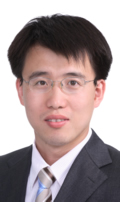 Yonglin Zhou,
CNCERT/CC, People’s Republic of China
Yonglin Zhou,
CNCERT/CC, People’s Republic of China
Mr. ZHOU Yonglin graduated from Harbin Institute of Technology with his master degree on computer science. He have worked for CNCERT/CC, the national CERT of China, for ten years. He's mainly engaged in the research on Internet security technology and the operation on hacking and malware activities monitoring, pre-warning and responding. Now he is the director of administration and operation department of CNCERT/CC. He has actively taken part in the international cooperations and forums, especially in CERT/CISRT area.
|
|
|
|



